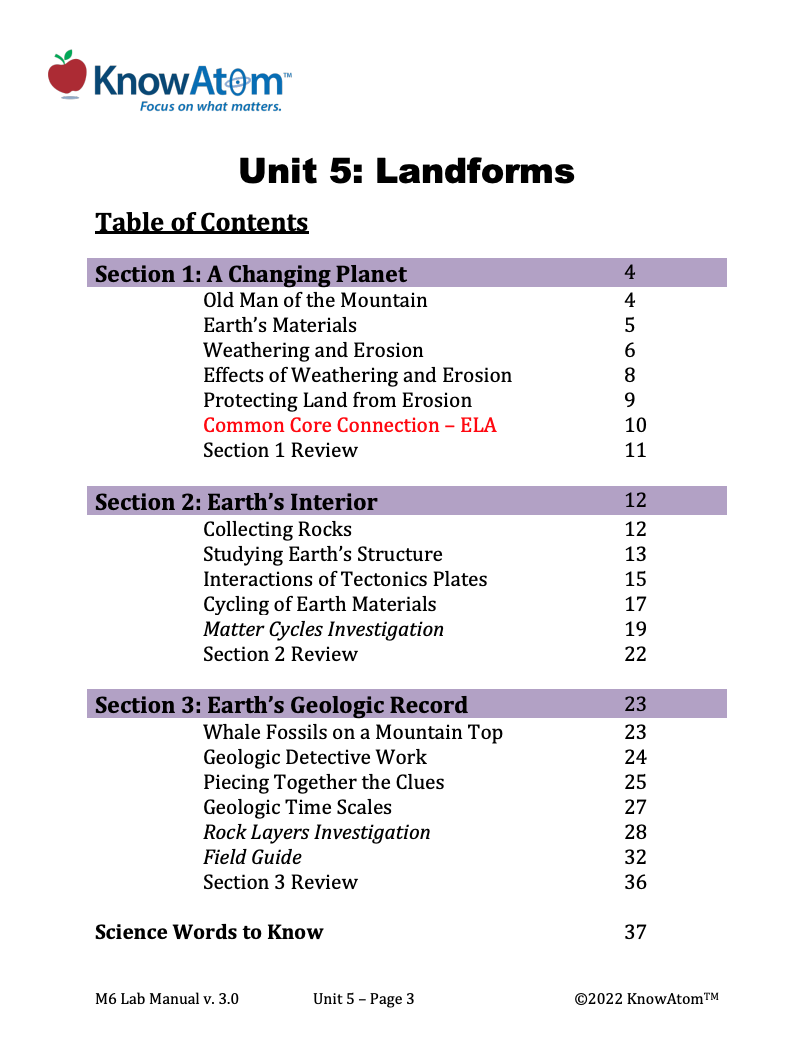.png)
In this unit, students explore phenomena of natural processes that cause Earth’s surface to change over time, analyzing how energy causes Earth’s matter to transform and cycle from one form to another. In this lesson, students investigate how Earth materials are continually being reshaped and reformed by multiple processes that are powered by energy from Earth’s hot interior and the sun. This page is a high-level extract of this lesson.
.png)
In this unit, students focus on phenomena related to Earth’s ice as they model how glaciers shape Earth’s surface, and investigate how scientists use ice cores to reconstruct Earth’s past climates and environments. In this lesson, students analyze how scientists can use the science phenomena of fossils in rock layers as evidence for past changes on Earth. This page showcases all the components of this lesson.
.png)
In this unit, students focus on the properties of different kinds of waves and the relationship between waves and energy. In this lesson, students design a simple seismograph using what they know about the properties of seismic waves produced by earthquakes. This page is a high-level extract of this lesson.

In this unit, students focus on the processes that cycle Earth materials, connecting the movement of water in the water cycle and wind with changes to Earth’s surface through weathering and erosion. In this lesson, students explore the science phenomena of how convection in Earth’s mantle causes the tectonic plates to move, creating many of Earth’s landforms. This page showcases key components of this lesson.
Standards citation: NGSS Lead States. 2013. Next Generation Science Standards: For States, By States. Washington, DC: The National Academies Press. Neither WestEd nor the lead states and partners that developed the Next Generation Science Standards were involved in the production of this product, and do not endorse it.
